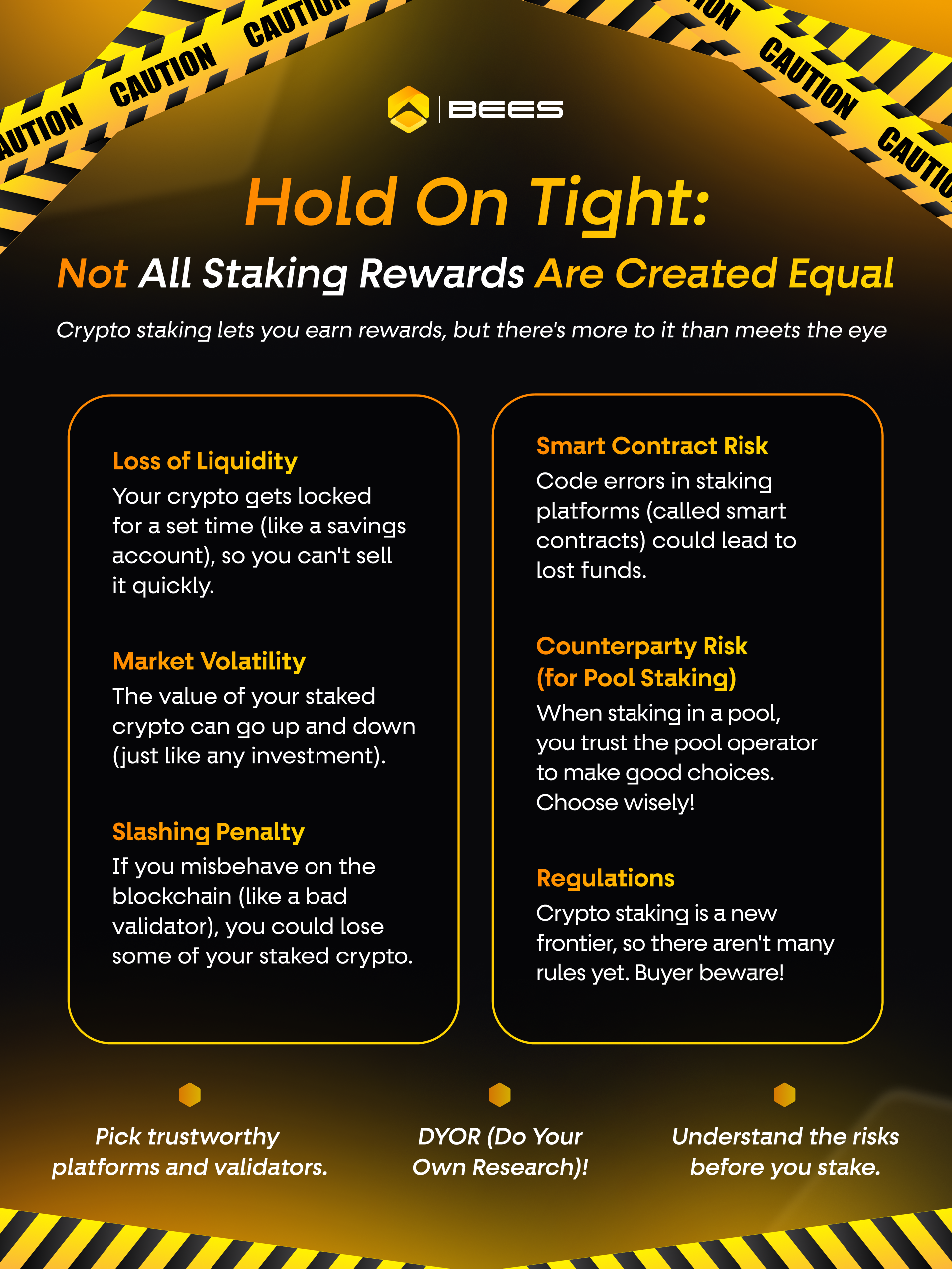Staking Crypto: Benefits or Risks?
2 min read - June 25 by Bella
Web3
Blockchain 101

Staking crypto offers exciting opportunities to earn rewards and contribute to a blockchain network. However, like any investment, it's crucial to understand the potential risks involved before diving in.
Price swings.
The cryptocurrency market is infamous for its wild price swings. This means the value of your staked crypto can plummet just as quickly as it rises. Even if you earn staking rewards, they might not compensate for a significant drop in the underlying coin's price.
2. Loss of stake.
Proof-of-Stake (PoS) networks rely on validators to act honestly and keep the network running smoothly. If you violate network rules, like double-signing transactions or being offline for too long, you could face penalties. These penalties can be harsh, potentially leading to the loss of some or all of your staked coins.
3. Centralization risk
While staking promotes decentralization in theory, some PoS networks might have a centralization issue. If a small number of validators control a large portion of the staked coins, they could wield disproportionate power over the network's decision-making.
4. Technical risk
Staking often involves locking your coins in a wallet or validator node for a set period. Technical glitches, like software bugs or security vulnerabilities, could lead to the loss of your staked crypto. It's essential to choose a reputable platform and prioritize strong security measures.
5. Locked Up and Out: Limited Liquidity
When you stake your crypto, it's typically locked in for a predetermined period. This means you might not be able to access and sell your holdings immediately. This limited liquidity can be a problem if you need to quickly sell your crypto to take advantage of an investment opportunity or react to sudden market changes.
6. Smart Contract Risk
Operational errors can occur when a smart contract does not operate as expected. There can be errors in the deployment process of a smart contract, leading to issues such as data loss or invalid transactions. Design errors can occur when a smart contract is not accurately designed or does not align with the desired objectives.
Staking can be a rewarding way to participate in a blockchain network, but it's not without risks. By carefully considering these potential drawbacks and conducting thorough research, you can make informed decisions and approach staking with a clear understanding of the playing field.